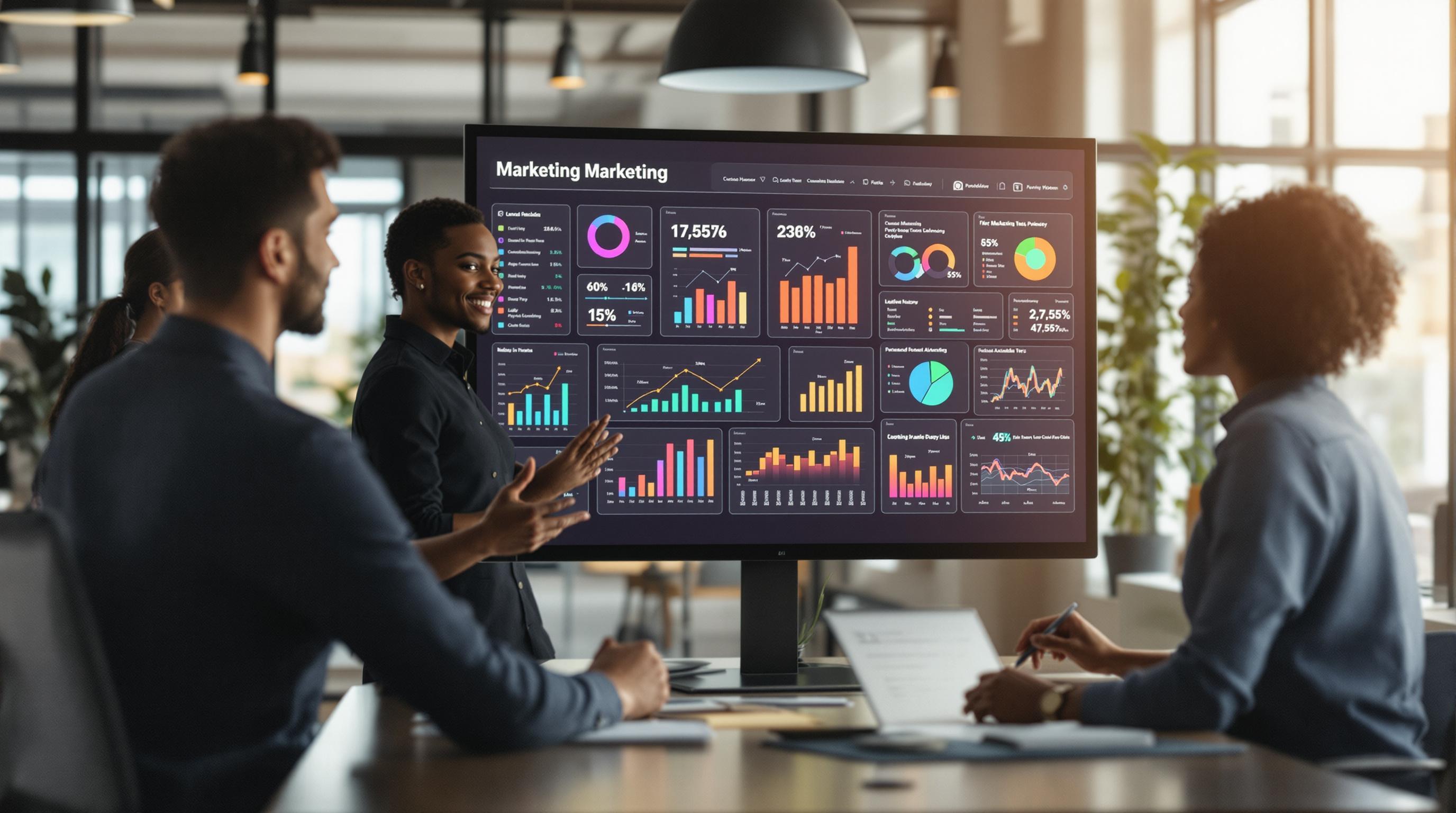Geographic personalization tailors marketing to specific locations, improving lead generation by making content more relevant and engaging. Here's how it works:
- Target by Location: Focus on regions, cities, or neighborhoods for precise audience segmentation.
- Local Messaging: Use content that resonates with local preferences, needs, or culture.
- Adapt Offers: Customize pricing, promotions, or recommendations for specific areas.
Key Benefits:
- Higher Conversions: Location-specific campaigns connect better with audiences.
- Lower Costs: Focus on high-potential areas to reduce wasted efforts.
- Better Engagement: Tailored content grabs attention and drives responses.
Steps to Get Started:
- Collect Location Data: Use IP-based geolocation, ZIP codes, or GPS.
- Segment Audiences: Group leads by city, region, or proximity.
- Create Local Content: Include local details like addresses, promotions, and testimonials.
Businesses like retailers, B2B companies, and restaurants already use this strategy to boost results. Respect privacy laws like GDPR and CCPA, and track metrics like response rates and cost per lead to refine your campaigns.
Leveraging Location-Based Marketing to Grow Your Business
Fixing Lead Generation Problems with Location Data
Using location data allows businesses to tackle lead generation challenges by focusing on areas with the best potential. This approach improves targeting, increases engagement, and trims costs.
Smarter Audience Targeting
Location data helps identify areas where your audience is most likely to convert. By focusing on these regions, your messaging can connect more effectively.
Improved Response Rates
Content tailored to specific locations naturally grabs attention and encourages more responses from your audience.
Reduced Cost Per Lead
Concentrating on high-potential areas minimizes wasted efforts, bringing down your cost per lead. Monitoring performance ensures your strategy stays efficient and delivers better ROI.
Setting Up Geographic Personalization
Collecting Location Data
To personalize content based on location, you’ll need accurate data. Here are some ways to collect it:
- IP-based geolocation: Automatically identifies a visitor's city-level location with good precision.
- Form fields: Ask for ZIP codes or city names when capturing leads.
- Mobile GPS: Get exact coordinates when users opt in through their mobile devices.
- Browser location API: Request permission to access user location directly through their browser.
Make sure to include clear privacy notices and keep this data secure. Once you’ve gathered this information, you can start organizing leads by location.
Creating Location-Based Lists
Organize your audience into smaller groups based on:
- Cities or metropolitan areas
- State or region
- ZIP code clusters
- Proximity to specific physical locations
- Time zones
For instance, you could target people living within 25 miles of a store to promote in-person events or group leads by state to align messaging with local trends. Once your lists are ready, focus on crafting content that speaks directly to each group.
Crafting Location-Specific Content
Tailor your marketing materials to reflect the local touch. Consider including:
- Local phone numbers and addresses
- Pricing or promotions specific to the region
- Availability of products in certain areas
- Testimonials or case studies from nearby customers
- Seasonal deals tied to the local weather
- Compliance messaging relevant to specific states
You can also go further by referencing well-known local landmarks, using regional imagery, or even adjusting your tone to fit urban or rural audiences. Small details like these can make your messaging feel much more personal and relatable.
sbb-itb-f031672
3 Companies Using Geographic Personalization
Here's how businesses in different sectors are putting geographic personalization into action.
Store Traffic Case Study
Retailers are using location-based strategies to boost foot traffic. Some of these include:
- Targeting customers within a 5–15 mile radius.
- Tailoring offers based on the stock available locally.
- Considering differences between urban and suburban shoppers.
- Mentioning nearby landmarks to make locations easier to find.
- Sharing store directions and contact details to simplify visits.
B2B Lead Generation Results
For B2B businesses, geographic personalization helps connect with leads more effectively:
- Routing leads to sales teams in their area.
- Creating messaging that resonates with specific regional business hubs.
- Scheduling follow-ups that align with local time zones.
- Addressing compliance rules unique to certain regions.
- Showcasing success stories from nearby businesses to build trust.
Restaurant Order Growth
Restaurants are personalizing their offerings to increase orders and improve customer satisfaction:
- Setting delivery zones based on population density.
- Modifying menus and prices to suit local tastes.
- Timing promotions to coincide with local events.
- Using neighborhood data to suggest dishes customers are likely to enjoy.
- Ensuring websites and apps feel relevant to the local audience.
These examples highlight how businesses can use geographic insights to connect with their audience more effectively.
Key Guidelines for Geographic Targeting
Privacy Rules and Requirements
When using location data, respecting user privacy is a must. Laws like the California Consumer Privacy Act (CCPA) and General Data Protection Regulation (GDPR) demand clear consent for location tracking. Here's what you need to do:
- Offer clear opt-in and opt-out options.
- Use encryption to secure stored location data.
- Set time limits for keeping location history, then delete it.
- Restrict sharing location data with third parties.
- Be upfront with transparent privacy policies.
Setting Personalization Limits
Keep personalization helpful, not invasive. Follow these steps to strike the right balance:
-
Distance-based targeting: Tailor your reach to the right scale:
- Local: 5–15 miles
- Regional: 50–100 miles
- National: Focus on state or region-level areas.
-
Content customization: Adapt based on how location matters:
- High impact: Store locations, delivery areas, service zones.
- Medium impact: Regional deals, seasonal promotions.
- Low impact: General brand messaging or values.
-
Frequency limits: Avoid overwhelming your audience:
- Weekly for location-triggered messages.
- Monthly for geographic promotions.
- 24–48 hours in advance for local event notifications.
Tracking Location Campaign Results
To measure how well geographic targeting works, focus on these key metrics:
| Metric | What It Measures | Target Range |
|---|---|---|
| Location Accuracy | How often targeting hits the mark | 95-98% |
| Response Rate | Actions taken per message sent | 15-25% |
| Cost per Local Lead | Spending per qualified local lead | $5-15 |
| Geographic Conversion | Sales from local campaigns compared to non-local | 2-3x higher |
| Opt-out Rate | Percentage of users disabling tracking | Under 5% |
Check these metrics monthly to fine-tune your approach. Adjust your targeting based on performance to keep engagement high while honoring user privacy.
For deeper insights, break down results by:
- Geographic areas (urban, suburban, regional).
- Business types or industries.
- Customer demographics.
These metrics and segmentation techniques will help you refine your strategies and improve your geographic targeting efforts.
Conclusion: Next Steps for Geographic Personalization
Once you’ve set up effective targeting and measurement strategies, it’s time to focus on putting them into action. Geographic personalization can improve lead generation by creating highly targeted, location-specific experiences. To make the most of it, consider these steps:
- Gather accurate location data.
- Segment your audience into location-specific groups.
- Develop content tailored to each local audience.
Related Blog Posts
- Advanced HighLevel Features to Supercharge Your Lead Generation Efforts
- Data-Driven Marketing: Using HighLevel and AI Insights to Refine Your Campaigns
- Personalized Client Journeys: Leveraging AI Analytics and HighLevel Triggers for Deeper Engagement
- Ultimate Guide to Geographic and Demographic Personalization



